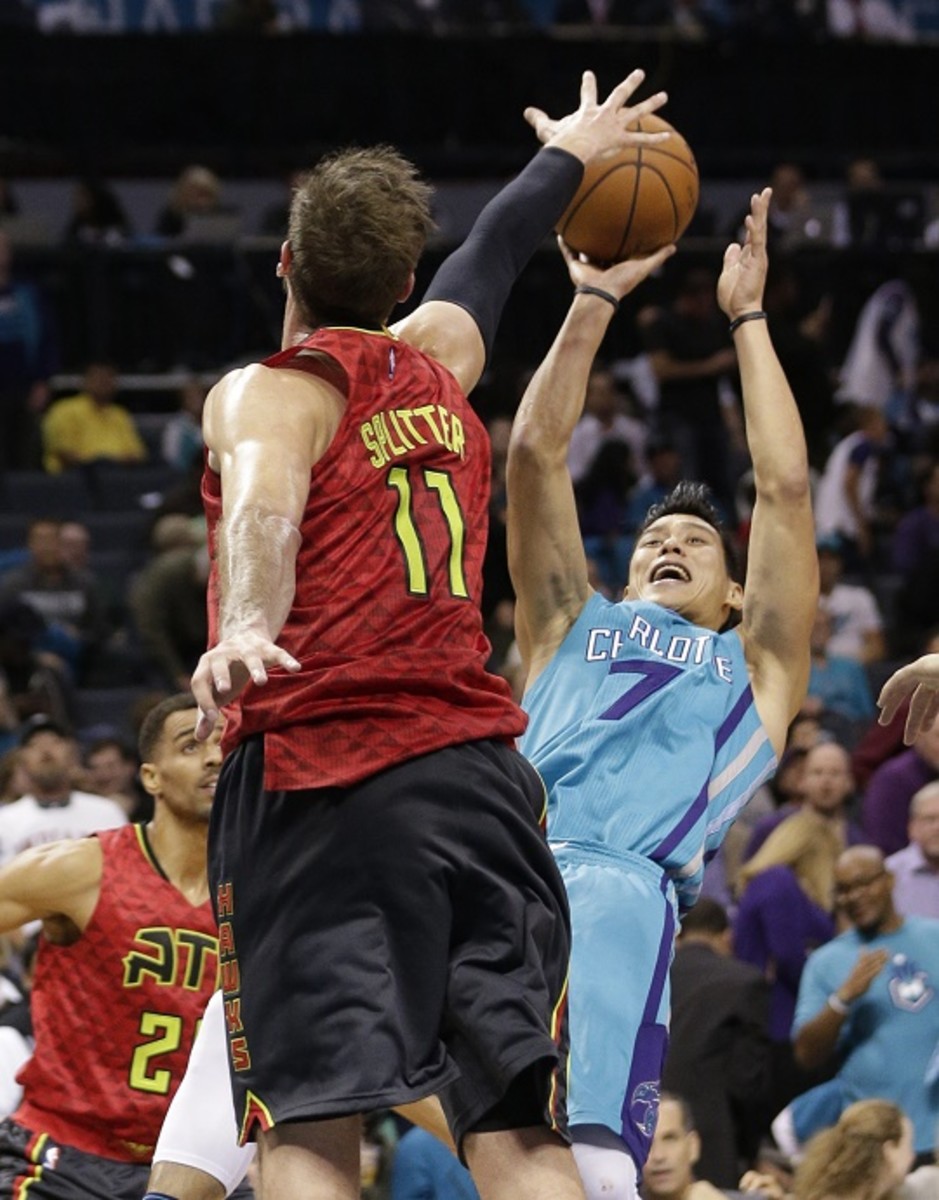Tiago Splitter's passing, defense make the Atlanta Hawks dangerous

Despite a 60-win season and a trip to the Eastern Conference Finals, the Atlanta Hawks are still widely perceived to be smoke and mirrors due to their lack of traditional star power.
While most championship teams boast an elite player who combines a multitude of resources from one spot on the court (with lesser pieces then filling the gaps around him), those resources are decentralized on the Hawks, and are held together by a brilliant system and collective basketball IQ. Seeing how Stephen Curry or LeBron James gets from point A to point B is easy to follow because everything flows from them, but so much of what makes the Hawks special occurs on the periphery, with multiple, specialized skill sets operating in harmony to recreate the same effect as having a star.
While the free agency loss of DeMarre Carroll disrupted some of those intricate processes, the front office helped offset his move with the addition of Tiago Splitter, whose entirely different skill set should plug very nicely into the system, and could make Atlanta even tougher come May.
Like the Hawks, the attributes that make Splitter so successful fly under the radar. He’s not much of a dunker, post scorer, or shot blocker. If you detailed the different moves in his repertoire, it would be a very short list, and even then he’d struggle to jump over it. With the ball in his hands, Splitter can look awkward, thanks to his propensity for reverse layups and assortment of flip shots he unloads from the hip or behind his head. On the rare occasions Splitter does end up in the national spotlight, it’s often for moments like the soul crushing block LeBron James levied against him in the 2013 NBA Finals. As such, the gap between the average fan’s perception of Splitter and his actual performance is sizeable.
Class In Session: The NBA’s next generation prepares to get schooled
Splitter, quietly, is a very good two-way player. Last season, the San Antonio Spurs outscored opponents by 12.4 points per 100 possessions with him on the court, which led the team. On defense, Splitter moves well for his size, with an elite understanding of angles and positioning. Splitter ranked second in the NBA in post defense, holding opponents to 33.8% shooting while often taking the tougher of the two frontcourt assignments. His ability to manage his assignments one-on-one allowed Tim Duncan to roam free and orchestrate the Spurs’ help defense.
“He’s always in great position. He doesn’t make any mistakes. He’s where he needs to be. He doesn’t foul inordinately,” Spurs coach Gregg Popovich said of Splitter in late 2013. “He understands spatial relationships and how to do his work early to be in a position to help us.”
Offensively, running spread pick-and-rolls with Splitter and Jeff Teague (or Dennis Schroder) and three shooters is going to be a deadly weapon for the Hawks. Splitter gets off his screens quickly, and utilizes that same sense of spatial relationships and timing to find the soft spots in the defense, forcing rotations. The best part of Splitter’s offensive game, by far, though, is his passing, especially with his ability to make quick reads off the short roll and kick out to open shooters — a skill particularly valuable to the Hawks given the way they want to spread the floor.
Splitter is among the best facilitators from the foul line area after receiving a pocket pass in the NBA. He makes touch passes to open shooters at tough angles to the wing, or to the corners before the defense has a chance to recover. In tight quarters, few are better interior passers, hitting the dump off pass to the other big man.

defender came to ‘bump’ the roll man or stunt toward the middle, there was an open 3-pointer available — provided someone could get the ball to the open man quick enough.
Working from the post, Splitter scored a surprisingly effective 1.07 points per possession last season (second in the NBA), but his success is due to selective usage on a low volume of attempts. Instead, San Antonio often fed Splitter the ball simply to change the attack angle on kickouts.
Overall, it’s likely the Hawks take a step back when it comes to regular-season wins. They only had a point-differential last season of a team with a win-total in the mid-50s, and with 34-year old Kyle Korver coming off surgery, Carroll’s departure, and Thabo Sefolosha recovering from a broken leg at the hands of the NYPD, the Hawks are banking on new faces to step in and fill the void. But different isn’t always worse.
Even if the Hawks can’t reach the same level of regular-season success, Splitter brings the Hawks a dimension they lacked in the postseason — a true center who can screen, post up, and facilitate from the high post. His size, rebounding, and mobility also should provide a boost at the defensive end. And with his relative familiarity with the Hawks’ motion offense — albeit one that's a bit more spread out than San Antonio’s — Splitter likely will be quick in figuring out how he can fit in.
So no, the Hawks didn’t land a star this off-season, and their biggest acquisition has very few skills that directly affect the game on his own. But in Splitter, the Hawks have a player who can make sense of all the skill sets around him, utilize them, and in a way, help tie them all together.
(Contributed to The Cauldron by Mika Honkasalo.)

